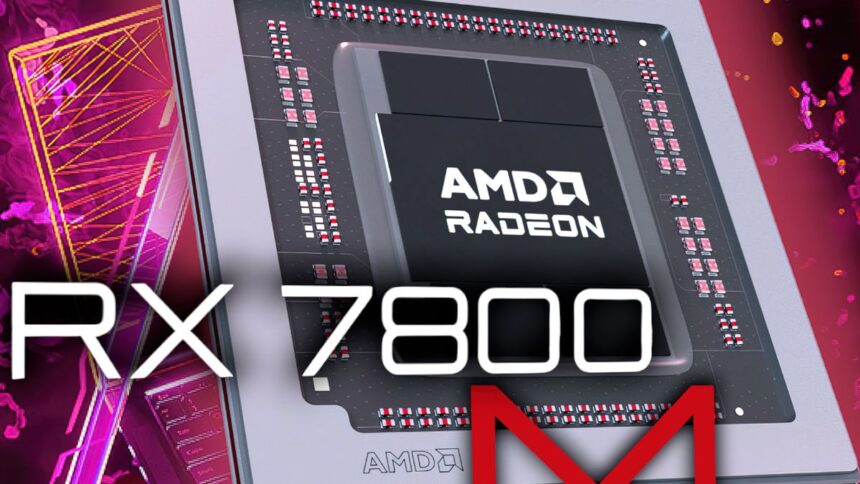AMD introduced its latest GPU this Wednesday (11), the Radeon RX 7800M, without much fanfare, designed for high-performance gaming laptops. The GPU shares the same core specifications as the integrated graphics unit (iGPU) used in the newly unveiled PS5 Pro.
The Radeon RX 7800M features a Navi 32 GPU, built on 5nm technology, and leverages the RDNA 3 graphics architecture. It boasts 60 compute units and 3,840 stream processors packed into a chip containing 28.1 billion transistors.
These specs align the new graphics card closely with the PS5 Pro’s GPU, as both have the same number of cores. However, there’s a notable difference: the PS5 Pro’s integrated GPU includes some RDNA 4-based features, particularly its ray tracing accelerators, providing an extra boost in more demanding, graphically intense scenarios.
Radeon RX 7800M vs Radeon RX 7800 XT
Some comparisons have emerged between the new Radeon RX 7800M and its desktop counterpart, the RX 7800 XT, as they belong to the same series and share the same number of cores. However, despite these similarities, key architectural differences set them apart.
The Radeon RX 7800M is designed with a more modest thermal profile, featuring a TDP of 180W, while the RX 7800 XT for desktops has a much higher limit of 263W—46% more. This power difference directly affects performance, including the maximum clock speeds of the two GPUs. The RX 7800M operates at a peak frequency of 2,145 MHz, compared to the RX 7800 XT’s 2,430 MHz, representing a 12% difference.
Another key distinction lies in the VRAM configuration. The RX 7800M has 12 GB of VRAM running at 18,000 MT/s with a 192-bit memory interface, resulting in a bandwidth of 432 GB/s. On the other hand, the RX 7800 XT comes with 16 GB of VRAM, a higher speed of 19,500 MT/s, and a maximum bandwidth of 624 GB/s, which translates to more robust performance for the desktop model. These differences highlight the trade-offs made to adapt the RX 7800M for mobile platforms while maintaining efficiency.
Radeon RX 7800M Performance
Given the benchmarks and comparisons, the Radeon RX 7800M’s performance will likely align more closely with the RX 7700 XT than the higher-end RX 7800 XT. Preliminary tests indicate that the RX 7800M is 28% faster than NVIDIA’s GeForce RTX 4070 but falls behind the top-tier Radeon RX 7900M by 14%.
Compared with NVIDIA’s more powerful models, like the GeForce RTX 4080 and RTX 4090, the RX 7800M is up to 31% slower, highlighting its position as a mid-range option for gaming laptops.
The RX 7800M is designed for gamers seeking Full HD resolution and 60 FPS gameplay or higher, offering a solid option for mid-range gaming notebooks. However, AMD faces a significant challenge in gaining market traction in the gaming laptop space, dominated by NVIDIA.
NVIDIA’s GPUs are featured in a broader range of devices from well-known brands, making it harder for AMD to compete, even if the RX 7800M is a strong contender performance-wise.
The key to the RX 7800M’s success will depend on how well AMD can secure partnerships with OEMs (Original Equipment Manufacturers) and convince laptop makers to adopt its GPUs. If AMD can establish a larger presence in the market, the RX 7800M could become a compelling option for gamers looking for alternatives to NVIDIA-powered machines.





